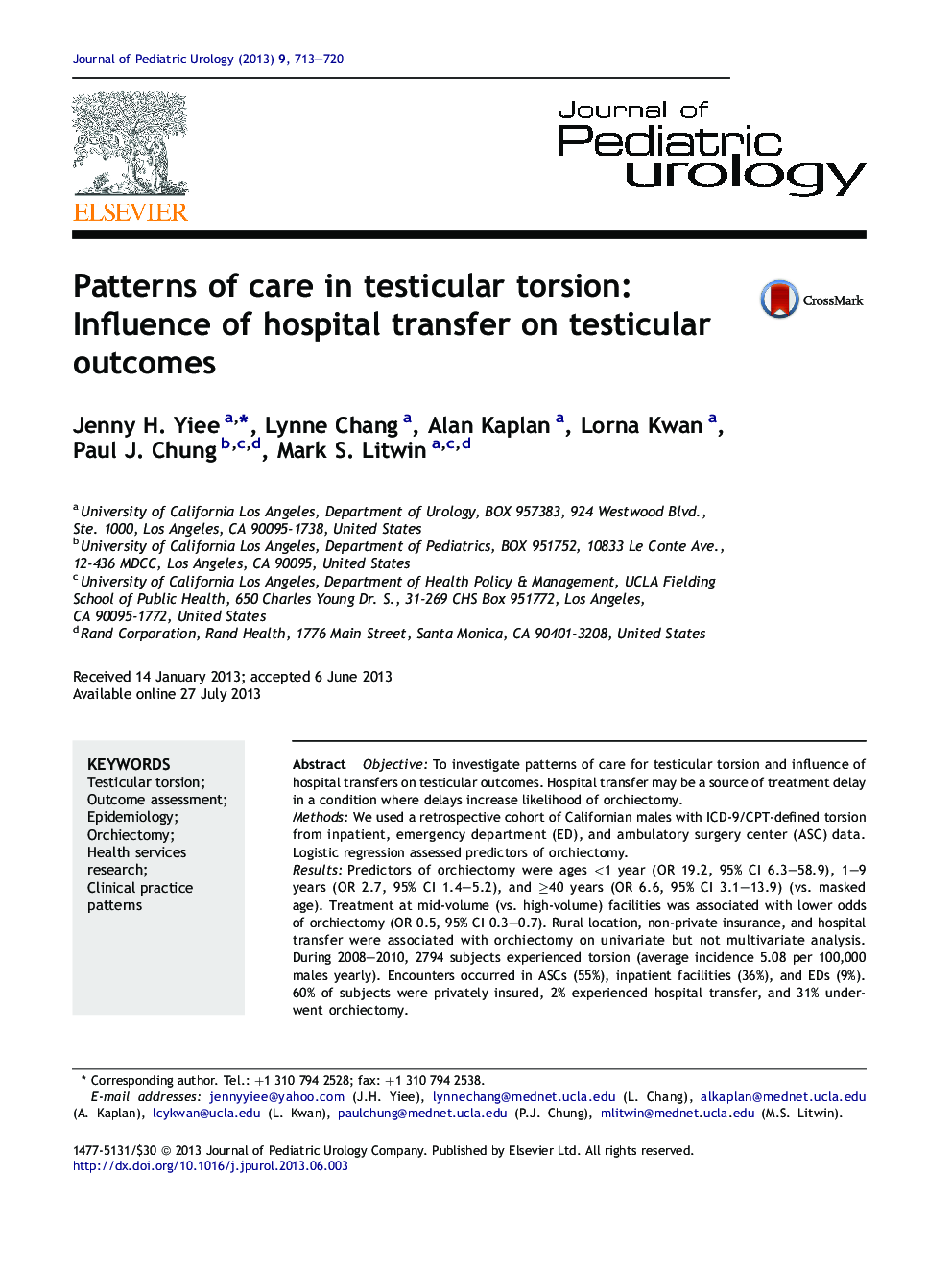| Article ID | Journal | Published Year | Pages | File Type |
|---|---|---|---|---|
| 6218480 | Journal of Pediatric Urology | 2013 | 8 Pages |
ObjectiveTo investigate patterns of care for testicular torsion and influence of hospital transfers on testicular outcomes. Hospital transfer may be a source of treatment delay in a condition where delays increase likelihood of orchiectomy.MethodsWe used a retrospective cohort of Californian males with ICD-9/CPT-defined torsion from inpatient, emergency department (ED), and ambulatory surgery center (ASC) data. Logistic regression assessed predictors of orchiectomy.ResultsPredictors of orchiectomy were ages <1 year (OR 19.2, 95% CI 6.3-58.9), 1-9 years (OR 2.7, 95% CI 1.4-5.2), and â¥40 years (OR 6.6, 95% CI 3.1-13.9) (vs. masked age). Treatment at mid-volume (vs. high-volume) facilities was associated with lower odds of orchiectomy (OR 0.5, 95% CI 0.3-0.7). Rural location, non-private insurance, and hospital transfer were associated with orchiectomy on univariate but not multivariate analysis. During 2008-2010, 2794 subjects experienced torsion (average incidence 5.08 per 100,000 males yearly). Encounters occurred in ASCs (55%), inpatient facilities (36%), and EDs (9%). 60% of subjects were privately insured, 2% experienced hospital transfer, and 31% underwent orchiectomy.ConclusionOur census found that most cases of testicular torsion were treated in outpatient settings. Hospital transfer was not associated with orchiectomy.
